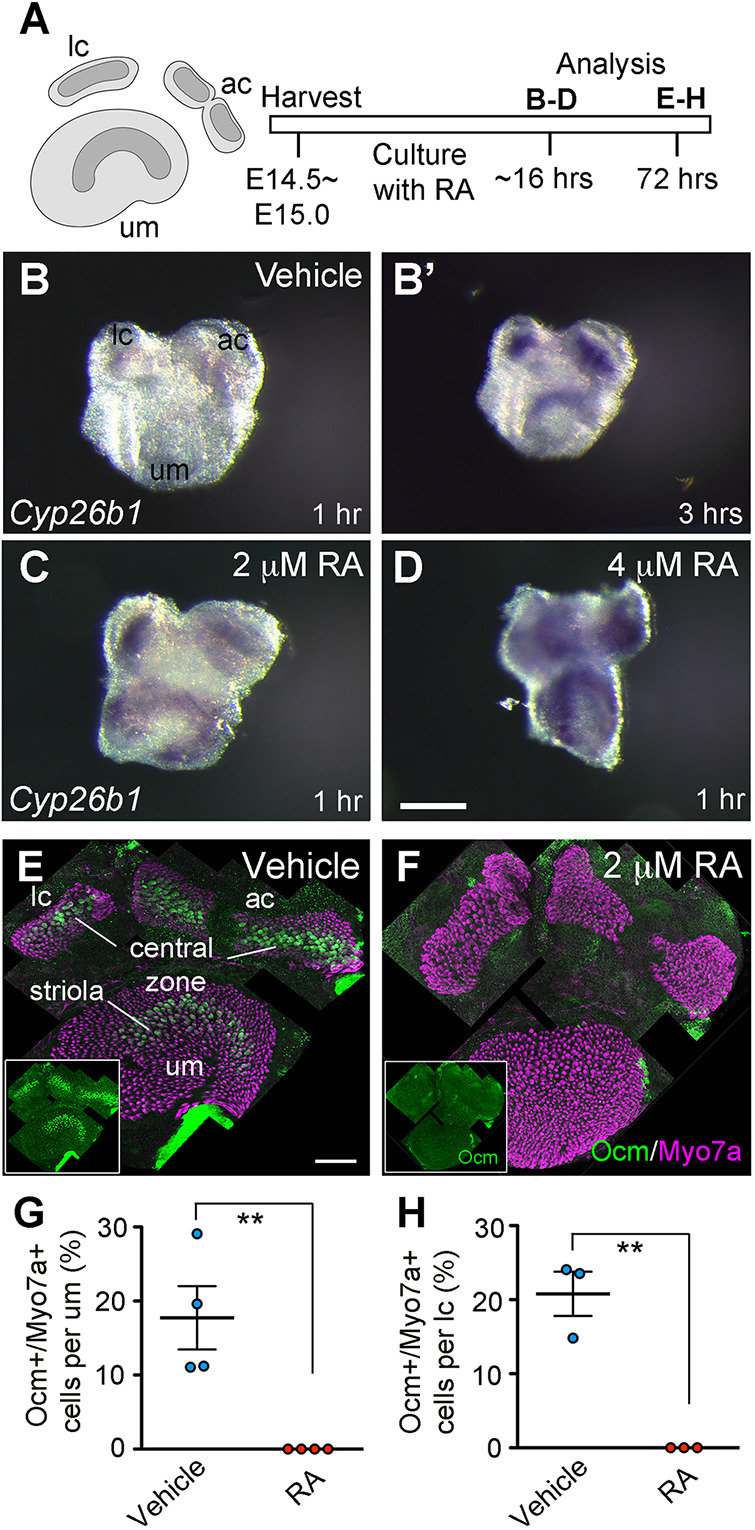Fig. 6.

Upregulation of Cyp26b1 but reduction of Ocm by exogenous RA. (A) In vitro experimental design of RA treatments. Vestibular organs of E14.5-E15.0 mouse embryos were cultured in the presence of RA. Specimens were processed for Cyp26b1 in situ hybridization after 16 h or immunostaining after 72 h of culture. (B-D) In samples treated with 2 µM (C) or 4 µM (D) RA, utricular maculae (um), anterior (ac) and lateral (lc) cristae showed upregulated Cyp26b1 transcripts in a dose-dependent manner (n=3 for each dose), in comparison to vehicle controls (n=4, B). Photographs of B-D were taken within 1 h after initiation of the in situ hybridization reaction. At this time, the reaction for the control sample (B) was incomplete; therefore, the hybridization reaction was extended to 3 h, and a photograph was taken (B′) at that time, which shows the normal Cyp26b1 expression pattern. Notably, the Cyp26b1 domain is expanded in RA-treated um. (E,F) Immunostaining of cultured vestibular organs with antibodies against Ocm (green) and Myo7a (magenta). (G,H) Quantification of percentages of Ocm+ HCs. In controls, Ocm is expressed in type I HCs of the striola in um (17.7±4.3% per um, n=4; E,G) and the central zone in the lateral cristae (20.8±3.0% per lc, n=3; E,H). By contrast, Ocm+ HCs are absent in RA-treated um (0%, n=4, P=0.0060, Student's unpaired t-test; F,G) and lateral cristae (0%, n=3, P=0.0023; F,H). Error bars: s.e.m. **P<0.01. Scale bars: 200 µm.
